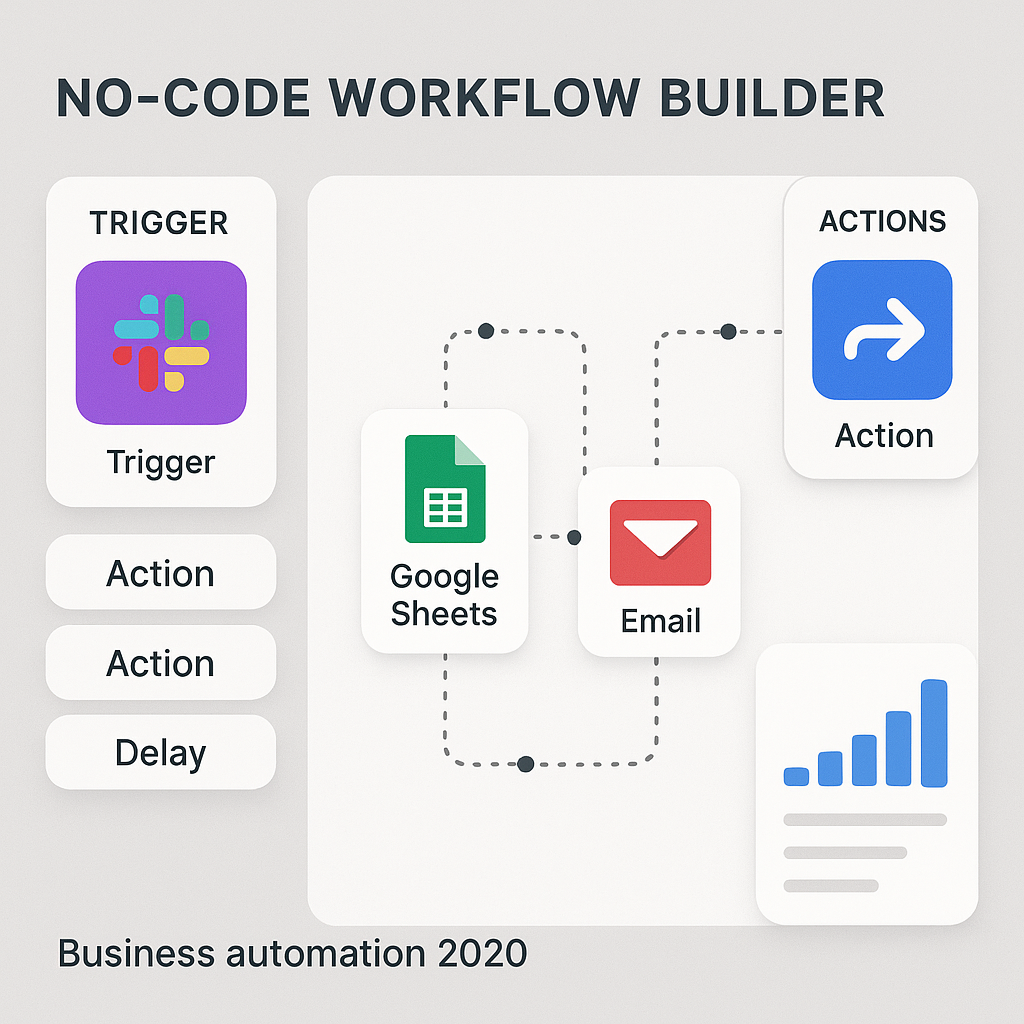Streamlining Workflows: The Rise of No-Code Automation in Business

In 2020, digital transformation accelerated as organizations searched for efficient ways to automate routine tasks and optimize business processes. While traditional automation often required technical expertise or expensive custom development, a new wave of "no-code" automation tools empowered business users and teams to take charge of their own workflows, unlocking agility and productivity gains across industries.
No-Code Automation: What Is It?
No-code automation platforms allow users to build automated workflows without writing a single line of code. By leveraging visual interfaces, drag-and-drop builders, and ready-made integrations, anyone—regardless of technical background—can automate repetitive processes, connect disparate systems, and streamline complex tasks.
Popular examples in 2020 included Zapier, Integromat (now Make), and Microsoft Power Automate. These platforms made it possible to create workflows linking cloud apps like Slack, Google Sheets, Salesforce, and beyond.
Why No-Code, Why Now?
A few trends converged in 2020 to make no-code automation mainstream:
- The proliferation of cloud-based SaaS apps created data silos and repetitive manual tasks
- Distributed, remote workforces demanded nimble, tech-enabled business processes
- IT departments faced mounting requests from business teams for digital solutions—but with limited time and budget to deliver
- Advancements in user interface design lowered the barrier for non-developers to build useful automations
Business Benefits: Speed, Flexibility, Empowerment
Adopting no-code automation offered several compelling advantages for organizations in 2020:
- Faster time-to-value: Business users could design and deploy solutions in hours—not weeks—without waiting on development resources
- Increased productivity: Automating manual tasks like data entry, notifications, or file syncing freed up teams to focus on higher-value work
- Reduced errors: Workflow automation minimized risks of manual mistakes, improving data quality
- Scalability: Solutions could be easily iterated and scaled as needs evolved
Real-World Use Cases
Some common 2020 use cases for no-code automation included:
- Automatically saving email attachments to cloud storage and alerting team channels
- Syncing contact data between marketing and sales tools
- Generating and distributing reports based on schedules or triggers
- Routing support tickets based on keywords or customer attributes
For instance, a recruitment firm used Zapier to automatically push job applications from their website to a Google Sheet, notify recruiters via Slack, and schedule candidate interviews—saving staff hours every week.
Challenges and Considerations
While no-code tools lowered barriers, organizations still needed to govern their use:
- Ensuring data privacy and compliance when automating data flows
- Selecting the right tool for complex, mission-critical automations
- Providing best-practices training to avoid "shadow IT" risks
The Future of Business Process Automation
As digital maturation continues, no-code automation is set to drive further innovation in workflow optimization—putting power in the hands of those closest to the business problems. The opportunity in 2020 was clear: embrace no-code to accelerate and streamline operations, or risk falling behind.
Ready to bring no-code automation to your business? Explore leading platforms like Zapier, Integromat, or Microsoft Power Automate and empower your teams to work smarter—not harder.